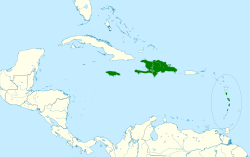| Rufous-throated solitaire | |
|---|---|
 | |
| Scientific classification | |
| Kingdom: | Animalia |
| Phylum: | Chordata |
| Class: | Aves |
| Order: | Passeriformes |
| Family: | Turdidae |
| Genus: | Myadestes |
| Species: | M. genibarbis |
| Binomial name | |
| Myadestes genibarbis Swainson, 1838 | |
 | |
The rufous-throated solitaire (Myadestes genibarbis) is a species of bird placed in the family Turdidae.
